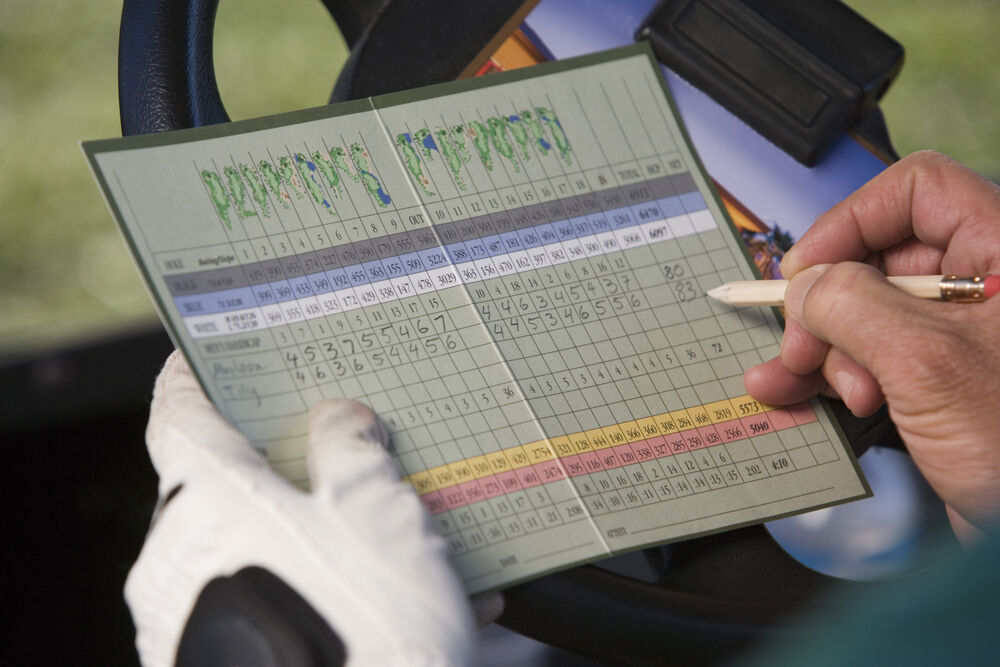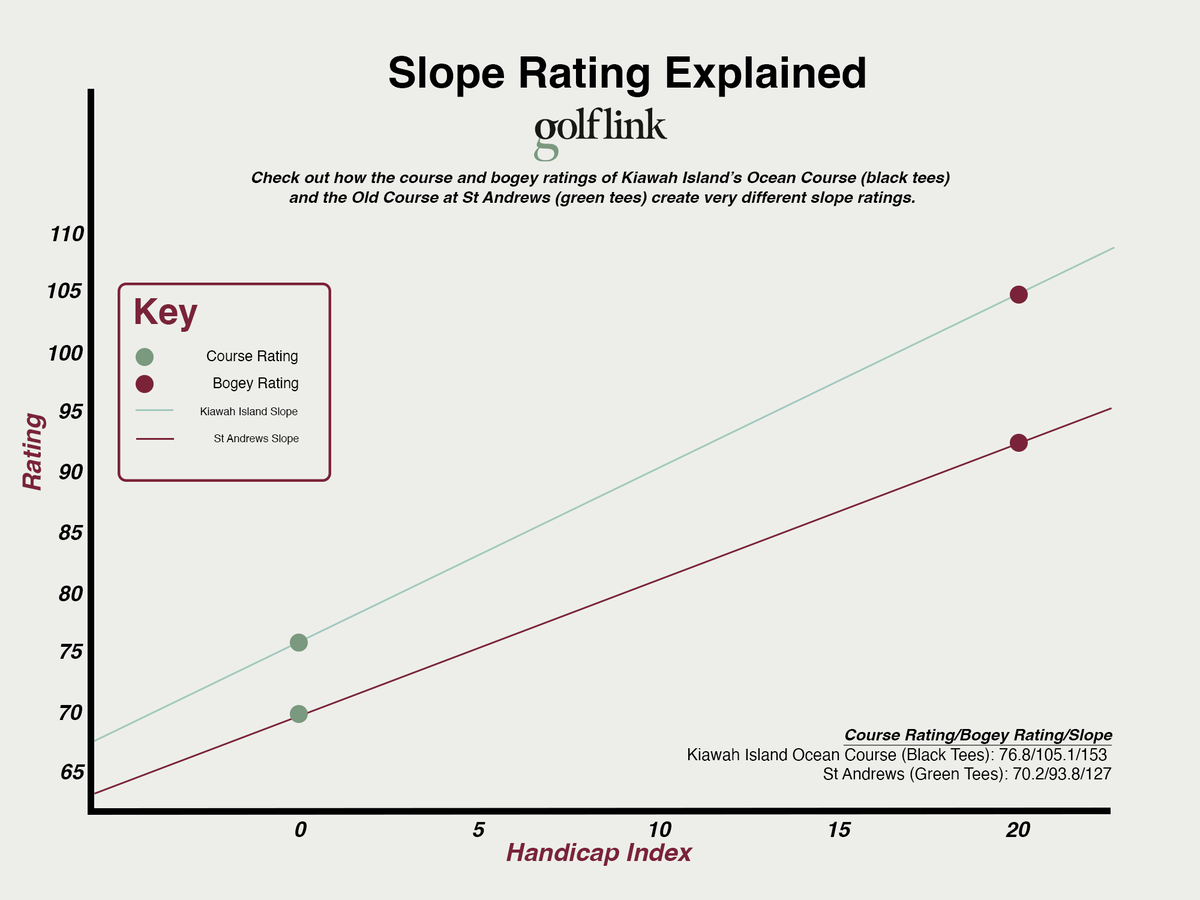Golf Slope Rating Explained in Easy Terms
Here's a simple explanation of slope rating in golf, and how to find any course's bogey rating!

A golf course’s slope rating is the relationship between its course rating and its bogey rating. The course rating is the score a scratch player should shoot on a good day, and the bogey rating is the score a player with a course handicap of around 20 should shoot on a good day.
If you don’t think your course has a bogey rating, think again. Even though it’s not published on the scorecard, every golf course with a course rating also has a bogey rating, and you can easily look up the bogey rating of any golf course rated by the USGA through the USGA Course Rating and Slope Database.
Less than two percent of all golfers are scratch players or better, and the fact is that the challenges of each course impact highly skilled players less than higher handicap players. That’s why it’s necessary to have a bogey rating and a course rating, and that’s where a course’s slope rating comes into play.
How is Slope Rating Calculated?

Slope rating is the slope of the line the connects the course rating and bogey rating
If you were to plot the course rating and the bogey rating on a graph and draw a line between them, think of the slope rating as the literal slope of that line. The steeper the slope (the higher the slope rating), the more difficult a course is for the higher handicap golfer compared to the scratch player.
Just to clear things up, slope rating has absolutely nothing to do with the topography or elevation changes on a golf course (the literal slope of the ground) or the undulations on the putting greens.
To calculate the slope rating, the USGA subtracts the course rating from the bogey rating, multiplies that number by 5.381 for men or 4.240 for women, then rounds the result up to the next whole number. Therefore, slope ratings are always whole numbers. Since the maximum slope rating is 155, any result greater than 155 produces a slope of 155.
Working backward from this formula, you can also calculate any course’s bogey rating from any set of tees if you know the course rating and slope rating (which are printed on the scorecard).
To do this, take the slope rating and divide it by 5.381 for men or 4.240 for women. Then add that result to the course rating. Because slope ratings are rounded up, this won’t give you the exact bogey rating to the decimal, but it will be within a couple tenths.
Helpful Hack
Use this formula to calculate any course’s bogey rating using the course rating and slope:
Bogey rating = slope rating / 5.381 (men) or 4.240 (women) + course rating
What Does Slope Rating Mean?
Just knowing a slope rating of a course without context isn’t very helpful, so let’s clear up what a slope rating means, and how to use the slope rating to gauge a course’s difficulty.
The slope rating scale ranges from 55 to 155, and the average slope rating is 113. The lower the number, the easier the course is, and the higher the number, the more difficult it is. You won’t find too many courses on either end of the scale, however, as most full-length regulation courses have slope ratings much closer to the average than either extreme.
The slope rating is used to calculate any given player’s course handicap on any course. For example, a player who carries a handicap index of 5.0 is not necessarily expected to shoot 5-over par on any golf course on any day.
While you don’t usually need to calculate your course handicap by hand – the USGA provides easy access to tools online and through its app to calculate this for you – knowing the formula can be helpful to contextualize what a slope rating is, and it’s also handy for the old-schoolers out there who still want to do the math themselves.
The formula for calculating your course handicap is:
Course handicap = handicap index x (slope rating / 113) + (course rating - par) rounded to the nearest whole number.
For example, a 10-handicap player playing a course with a slope rating of 133, course rating of 71.2 and course par of 72 would have a course handicap of 11 (10.0 x (133 / 113) + (71.2 - 72).

Bogey Golfer Official Handicap and Stats
Slippery Slope
It’s good to understand the factors that go into calculating your handicap and course difficulty, and slope rating is one of those factors. However, golf handicapping as a whole is fairly complex and can be confusing when you try to grasp every minute detail.
The USGA provides all the tools you need to get a handicap and find your course handicap for any course, so you can focus on playing golf and let the numbers take care of themselves.

Scratch Golfer FAQs: Behind the Term + Practical Tips